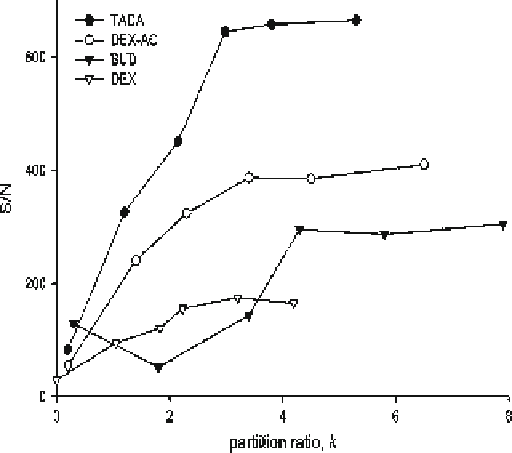Biomedical Engineering Reference
In-Depth Information
Fig. 4
Signal-noise ratio for various corticosteroids in plasma samples under conditions providing
a range of chromatographic retentions (Reproduced with permission from American Chemical
Society)
As a result of these studies, the optimal mLC separation conditions were selected
based on three considerations: first, the peaks of target compounds must be resolved
from endogenous interfering peaks; second, the S/N for all target compounds be
maximized, the interfering peaks are separated from those of target compounds and
do not contribute to the signals of targets, the run time must be as short as possible
to ensure a reasonable assay throughput and prevent serious peak broadening. The
final conditions are summarized in the experimental section.
Because of the smaller column volumes for capillary columns, the
V
inj
is held to
a much smaller volume than for conventional columns to avoid column overca-
pacity and
V
inj
for the 0.3 mm I.D. column used here was usually 0.1-0.2 m L. Given
that it would be difficult to concentrate the SPE eluate further without compromising
quantitative performance, the ability to inject higher sample volumes would be
advantageous. The hypothesis was that the complexity of plasma samples would be
reduced considerably by the selective SPE approach employed, and therefore a
considerably higher
V
inj
could be tolerated without compromising chromatographic
separation if the proposed two-segment gradient was used.
To test this hypothesis, the mLC performance was evaluated as a function of
V
inj
for analyte-spiked plasma samples. Typical chromatograms are shown in Fig.
5
[
4
] .
The retention times of target compounds increased only slightly as
V
inj
was increased,

